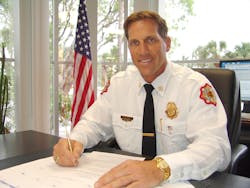Recently, I was given an assignment to conduct a comprehensive review of various shift schedules and ultimately submit a proposal for one that was more efficient than our current 24-hour shift. In essence, I was being asked, what is the most efficient work schedule for the fire service? The exercise proved to be quite interesting and may shed some light on an interesting topic.
The nature of public safety establishes a need to provide services 24 hours a day, 7 days a week, 365 days a year. To accomplish this, many fire departments utilize a 24-hour shift. Other fire departments as well as other public safety organizations, such as police, 9-1-1 communications and those in the medical community, have the same requirement to provide services 24 hours a day but few, if any, utilize a 24-hour shift. In contrast, many utilize some form of a 12-hour shift. Why is that? Let’s dig into the answer by first addressing the 24-hour shift.
24-hour shifts
There are many variations of the 24-hour shift, but for the purpose of this discussion, we will focus on a schedule where an employee works 24 hours on duty and gets 48 hours off along with a Kelly Day (a day off occurring at a prescribed interval required to keep an employee from working too many hours during a pay cycle). The Kelly Day usually occurs every six to 10 shifts depending on the agreed upon and/or negotiated work week. The 24-hour shift provides several benefits for the organization: infrequent shift exchanges, employees who can work more than 40 hours per week, and consistent coverage throughout the year, including weekends and holidays.
The benefit of infrequent shift exchanges is a result of the significant amount of time required to handle emergency calls. In the case of a working structure fire, fire crews can be on scene for several hours, if not longer. The same holds true for other types of emergencies, such as complex automobile extrications and hazardous material leaks and spills. In the case of a medical response, patient treatment and transportation can also be a lengthy process. In these situations, the less frequent shift exchanges occur, the less chance there is that a crew will be busy on scene of an emergency, which would delay and disrupt the shift exchange process.
Another way the 24-hour shift benefits the organization is that it provides employees who can work in excess of 40 hours per week. For example, firefighters who work a 24-hour shift followed by 48 hours off and receive a Kelly Day every seventh shift work a 48.46-hour work week. Federal law allows firefighters to work up to 53 hours per week without requiring overtime pay. As a result, the 24-hour schedule provides fire departments with more hours of coverage per employee compared to the more traditional work week. In addition, the 24-hour shift provides employees who understand and accept that they are required to work every third day regardless of whether their shift falls on a weekend or holiday.
The 24-hour shift is also very popular with employees. One reason for this is that, as a result of working 24 hours in a single shift, employees work fewer shifts throughout the month. Although the total number of hours worked per week is actually more, the 24-hour shift described above results in an employee working approximately eight to 10 shifts per month. This explains why employees who live greater distances away from their fire stations prefer 24-hour shifts. Another reason why the 24-hour shift is popular with employees is because employees are usually afforded downtime while not training, responding to emergencies or conducting other fire department related duties.
On the organizational side, a significant downside of the 24-hour shift is the fact that staffing levels cannot be adjusted according to the workload. In other words, there is no way to adjust the number of personnel on duty to correlate with the typical call volume experienced throughout a 24-hour period.
Another significant downside that should be considered is fatigue. Some agencies that run a large number of structure fires are not able to use 24-hour shifts because of the amount of fatigue placed on the employees. However, if this is not an issue, the 24-hour shift is very attractive for both employees and employers.
12-hour shifts
As mentioned earlier, another commonly used work schedule in public safety and the medical community is the 12-hour shift. There are several variations of the 12-hour shift. However, for the purpose of this discussion we will consider the 12-hour shift where the employee works four days on duty followed by four days off.
To some degree, the 12-hour shift provides the organization with the same benefits of the 24-hour shift, which includes having employees who work in excess of a 40-hour work week and employees that provide continuous coverage for weekends and holidays. The 12-hour shift described above equates to a 42.46-hour work week.
In terms of efficiency, the 12-hour shift provides organizations with the flexibility needed to adjust staffing levels based on peak and non-peak call times. This is a major benefit over the 24-hour shift and, hence, one of the reasons why it is popular with a variety of organizations. Based on five years of historical data, we have determined that our peak call times are from 8 a.m. until 8 p.m., seven days per week. After 8 p.m., our call volume drops off significantly. Specifically, we have determined that we receive almost 70 percent of our calls for service between 8 a.m. and 8 p.m., and the remaining 30 percent between 8 p.m. and 8 a.m. This is where the 24-hour shift becomes inefficient. It has the same number of personnel on duty during the non-peak call times as it does during the peak call times.
Interestingly enough, our historical data also indicates that we respond to the vast majority of our structure fires and experience a majority of our fire losses and on-the-job injuries during our peak call times. In addition, when we do have the need to request mutual aid, it is also usually during our peak call times. This supports the notion that by not changing our current staffing levels during our peak call times when we typically receive almost 70 percent of our calls, we can still operate safely and effectively while reducing our staffing levels slightly during our non-peak call times. It is important that each organization review their own data to determine their peak and non-peak call times, but I am certain that many will have similar results.
The ideal situation
So, back to the original question, what is the most efficient work schedule for the fire service? It is evident that there is no one schedule that works best. It is actually a combination of both the 24-hour shift and the 12-hour shift. The 24-hour shift provides you with employees who typically work between 46 and 50 hours per week with minimal shift exchanges while providing continuous coverage throughout the year. The 12-hour shift also provides these benefits; however, in addition, it provides you with the ability to schedule additional employees that are only necessary during your peak call times.
One model would be to schedule the majority of your personnel, approximately 75 percent, on a 24-hour shift and the remaining 25 percent on a 12-hour shift. Personnel on the 12-hour shift would be assigned to emergency vehicles that will operate only during your peak call times. These units will be shut down during your non-peak call times. The combination of the 24-hour shift and the 12-hour shift would result in having the same number of employees on duty with the same number of units in service during peak call times, while allowing you to reduce staffing slightly during your non-peak call times. In addition, it can result in some cost savings as a result of needing approximately 5 percent fewer employees during your non-peak call times.
Of course, the practice of “peak staffing” or staffing according to your needs is nothing new. It is practiced in most others aspects of local government, including public safety, and is even more prevalent in the private sector. However, based on the fact that “peak staffing” is not widely practiced in the fire service, implementing it may be difficult in established departments. The ideal situation would be where a municipality and organization are currently experiencing significant development and growth. At that point, they would embrace the concept of utilizing a peak-staffing model prior to hiring additional employees for their 24-hour shift. They would set their 24-hour staffing levels based on their needs during their non-peak call times and hire new employees to staff the additional units needed during their peak call times. This scenario would probably be understood and accepted more readily as opposed to trying to implement the change retroactively with a municipality and department that are no longer growing.

John Picarello | Fire Chief
JOHN PICARELLO has been fire chief of the Pembroke Pines, FL, Fire Rescue Department for 10 years. The department has 210 career firefighters who respond out of six stations. Picarello has more than 30 years of fire service experience and holds a master’s degree in public administration.






